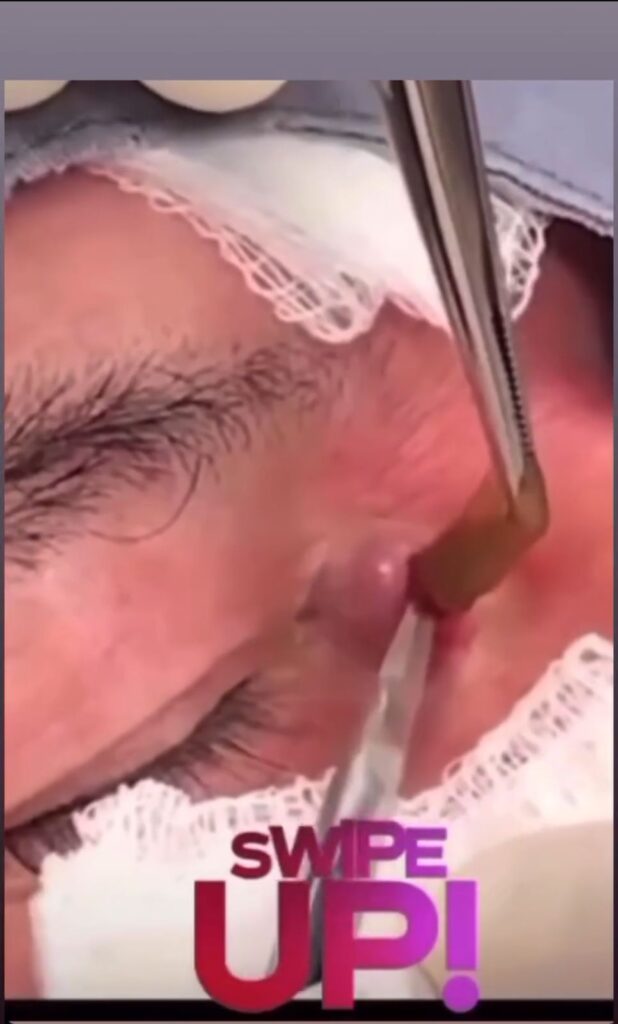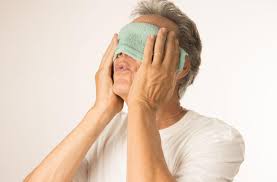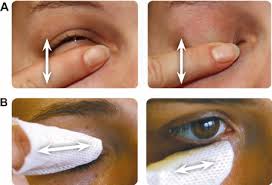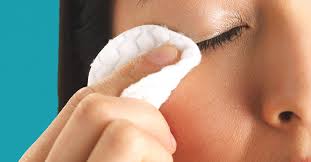
1. Warm Compress Application

- How It Helps: The application of heat to the chalazion softens the hardened oil and promotes drainage of the clogged meibomian gland. This reduces inflammation and helps to unblock the gland.
- How to Apply:
- Take a clean washcloth and soak it in hot water (ensure it’s not too hot to avoid burning your skin).
- Wring out the excess water.
- Place the cloth gently over the affected eyelid for about 10-15 minutes. Keep rewetting the cloth with warm water as it cools.
- Do this 3-4 times a day for a few days to reduce the swelling and irritation.
- Tip: To make the process more effective, gently massage the eyelid in a circular motion after applying the compress to help expel the trapped oil.
2. Gentle Eyelid Massage

- How It Helps: Massaging the area around the chalazion can stimulate the blocked gland to drain. It can also help soften the cyst if it’s been present for a while.
- How to Perform:
- After applying a warm compress, use your clean fingertip to gently massage the area where the chalazion is located.
- Use soft circular motions and apply slight pressure to encourage the oil to flow from the gland.
- Be careful not to apply too much pressure, as this could worsen the condition or cause discomfort.
- Do this for about 5 minutes a couple of times a day.
3. Use of Over-the-Counter Eyelid Scrubs

- How It Helps: Cleaning the eyelid can help remove any excess oil, debris, or bacteria from the area around the chalazion. It can also help prevent additional blockages.
- How to Use:
- You can buy commercial eyelid scrubs or use pre-moistened eyelid wipes available at pharmacies.
- Gently wipe the affected eyelid with these products.
- Clean the area at least once a day, preferably in the morning or before going to bed.
- Tip: Look for wipes or solutions with tea tree oil or hypochlorous acid, as they can help to reduce bacteria and inflammation.
4. Maintain Proper Eyelid Hygiene

- How It Helps: Keeping the eyelids clean reduces the risk of recurrent chalazion formation and helps manage the current one.
- How to Maintain Hygiene:
- Wash your face with a gentle cleanser.
- Avoid rubbing your eyes, as this can introduce bacteria or dirt into the area.
- Be cautious when using makeup. If you wear makeup, remove it thoroughly before bed, especially around the eyes.
- Avoid sharing eye products like mascara or eye shadow.
5. Topical Antibiotic Ointment (Only When Recommended by a Doctor)
- How It Helps: Although chalazions are not bacterial infections, a doctor may recommend a topical antibiotic ointment to prevent infection if there’s a risk of secondary infection.
- How to Use:
- Your doctor may prescribe an ointment such as bacitracin or erythromycin to apply to the affected area.
- Always use the ointment as directed, typically by applying a small amount to the eyelid margins using a clean finger or cotton swab.
- Follow up with your healthcare provider if the chalazion doesn’t improve or worsens after a few days of treatment.
6. Corticosteroid Injection (For Larger Chalazions)
- How It Helps: For persistent or larger chalazions, corticosteroid injections can reduce inflammation and shrink the cyst.
- How It Works:
- A healthcare professional can inject a small amount of corticosteroid directly into the chalazion.
- This can help reduce the swelling and speed up the healing process.
- It is usually considered when the chalazion does not respond to warm compresses and other home treatments.
- Note: This procedure should only be performed by a doctor.
7. Warm Tea Bag Compress
- How It Helps: A warm tea bag (preferably black tea) contains tannins, which have anti-inflammatory properties that can help soothe the chalazion.
- How to Use:
- Soak a tea bag in hot water and let it cool to a warm, comfortable temperature.
- Place the tea bag directly on your closed eyelid for 10-15 minutes.
- Repeat 2-3 times a day.
- Why Tea Works: The caffeine in the tea also helps to constrict blood vessels, reducing swelling.
8. Use of Artificial Tears
- How It Helps: If your chalazion is affecting the comfort of your eyes or causing dry eye symptoms, using artificial tears can relieve the irritation and prevent further blockage.
- How to Use:
- Use preservative-free artificial tears available over-the-counter.
- Instill one or two drops in the affected eye several times throughout the day to lubricate the eye and reduce irritation.
- Tip: Avoid using any eye drops with preservatives that could irritate the eye further.
9. Avoid Squeezing or Popping the Chalazion
- Why It’s Important: Although it might be tempting to try and squeeze or pop a chalazion, this can worsen the condition by pushing the oil deeper or causing an infection.
- What to Do Instead:
- Stick to the warm compress and massage techniques mentioned above.
- Avoid putting unnecessary pressure on the affected eyelid.
- Squeezing can also lead to permanent scarring or recurrence of the chalazion.
10. Seek Medical Attention If Necessary
- When to Visit a Doctor: If the chalazion does not improve after a few weeks of at-home treatments, it could be a sign that professional intervention is needed.
- What the Doctor Can Do:
- Your healthcare provider may perform a minor surgical procedure to drain the chalazion if it’s persistent or large.
- The procedure typically involves numbing the eyelid and then making a small incision to drain the cyst. This procedure is done in-office under local anesthesia.
- In rare cases, if there is suspicion of underlying issues such as skin cancer, your doctor might recommend additional tests or biopsy.
Additional Tips:
- Diet and Hydration: Ensure you’re staying hydrated and maintaining a balanced diet rich in omega-3 fatty acids (found in fish, nuts, and seeds). These help promote healthy glands and may prevent future blockages.
- Avoid Contact Lenses: If you wear contact lenses, avoid wearing them while you have a chalazion, as this can irritate your eye further.
By following these detailed tips, most chalazions can be managed and may eventually resolve on their own. However, if they persist or cause significant discomfort, seeking medical advice is recommended.
